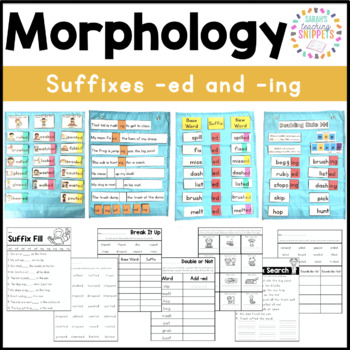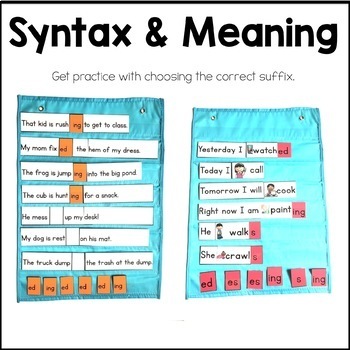Suffix ed and ing
Sarah Paul
33.2k Followers
Resource Type
Standards
CCSSL.K.4b
CCSSL.1.1e
CCSSL.1.4b
CCSSL.1.4c
Formats Included
- Zip
- Google Apps™
Sarah Paul
33.2k Followers

Includes Google Apps™
The Teacher-Author indicated this resource includes assets from Google Workspace (e.g. docs, slides, etc.).
What educators are saying
Loved using the resource in small group. My phonics curriculum doesn't include many changes in endings. This was the perfect supplement.
As an RTI reading specialists that works with struggling readers in 3rd and 4th grade, this resources is so valuable!!! Thank you!
Also included in
- Use this SoR-aligned bundle to introduce suffixes to your beginning readers. This resource has visuals to help students understand the meaning and purpose of the suffixes -s, -es, -ed, -ing, er, and -est. It also teaches the Dropping Rule, the Changing Rule, and the Doubling Rule for suffixes. TherePrice $13.00Original Price $19.50Save $6.50
Description
Use this SoR-aligned resource to introduce suffixes to your beginning readers. This resource has visuals to help students understand the meaning and purpose of the suffixes ed and ing. Look at the preview to see what is included. There are both printable and pocket chart activities (with an option for both big and small pocket charts.) There are also detailed lesson plans!
- 5 detailed lesson plans (3 for -ed, 2 for -ing, and 1 for the doubling rule)
- 16 printable activities
- 6 pocket chart activities
There are Google Slides for the student pages and "Sounds of -ed" sorting activity.
Total Pages
Answer Key
N/A
Teaching Duration
N/A
Report this resource to TPT
Reported resources will be reviewed by our team. Report this resource to let us know if this resource violates TPT’s content guidelines.
Standards
to see state-specific standards (only available in the US).
CCSSL.K.4b
Use the most frequently occurring inflections and affixes (e.g., -ed, -s, re-, un-, pre-, -ful, -less) as a clue to the meaning of an unknown word.
CCSSL.1.1e
Use verbs to convey a sense of past, present, and future (e.g., Yesterday I walked home; Today I walk home; Tomorrow I will walk home).
CCSSL.1.4b
Use frequently occurring affixes as a clue to the meaning of a word.
CCSSL.1.4c
Identify frequently occurring root words (e.g., look) and their inflectional forms (e.g., looks, looked, looking).






